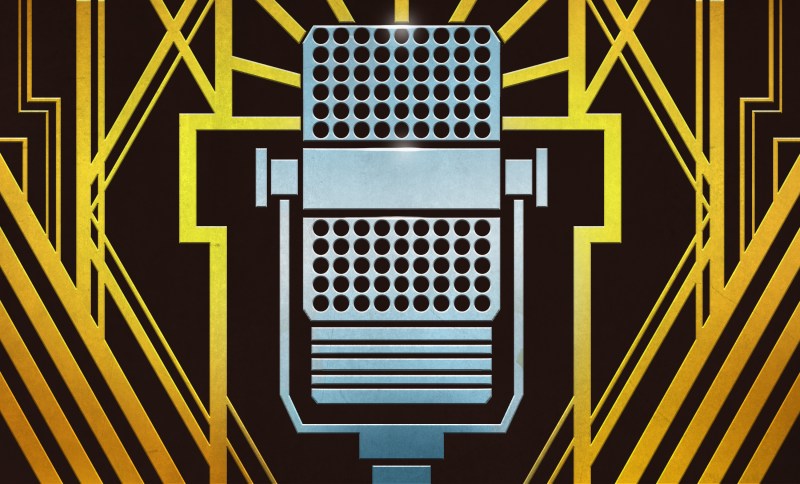Join Editors Mike Szczys and Elliot Williams as they recount a week of fascinating hacks. We take a good look at the PMS150C, a microcontroller that literally costs pennies but can only be flashed once. SNES emulators have a new trick up their sleeves to make low-def a lot less low, and you retro enthusiasts will either hate or love the NES zapper chandelier. Elliot’s enamored by a bike computer running Android core, and both Mike and Elliot delve into the food hacking scene, be it meat, chocolate, coffee, or of course frosting!
Take a look at the links below if you want to follow along, and as always, tell us what you think about this episode in the comments!
Take a look at the links below if you want to follow along, and as always, tell us what you think about this episode in the comments!
Direct download (60 MB or so.)
Episode 017 Show Notes:
New This Week:
- VCFe 20.0 – Vintage Computer Festival Europe
- VCFe The Game! (written in ZIL)
- Cray Cyber 960
- This weekend is VCF East:
- Here’s a Cyphercon badge hack that spoofs the tape reader:
- KiCon was amazing!
Interesting Hacks of the Week:
- Making A Three Cent Microcontroller Useful
- The CH552 was the last low-cost uC we remember seeing: How To Program A Really Cheap Microcontroller
- eForth for STM8
- ESP14: ESP8266 + STM8
- PMS150C datasheet
- The only place we could easily source these is lcsc.com
- Bike Computer Exploration Uncovers a Hidden Android
- Scratch Built Smartwatch Looks Pretty Darn Sharp with 3D Printed Case and Round LCD
- Simple, Self-Contained LoRa Repeater In About an Hour
- SNES Mode 7 Gets An HD Upgrade
- Thanks to Greg Kennedy for linking to this excellent explanation: BSNES (emulator) mod allows for HD rendering of Mode7 games
Quick Hacks:
- Elliot’s Picks:
- Mike’s Picks:
Can’t-Miss Articles:
- 3D Printering: The Quest for Printable Food
- Make That Special Cup Of Coffee By Completely Tweaking The Coffee Machine
Interview:
Mike caught up with Craig Bishop at KiCon to talk about the advancements in autorouting — from algorithm to implementation — that Craig has been working on.
















Another great cast.
Can the background music during the intro be killed or made significantly more background?
Thanks for the feedback. We’ll take a look at this for future episodes.
The “Cray Cyber 960” is not a Cray Supercomputer at all.
It was a Control Data Corporation (hence: CDC) computer.
Although Seymour Cray was a CDC employee, and led several designs (most notably the CDC 6600), he left in 1972 to found Cray Research Incorporated (CRI). The CDC Cyber 180-960 was from 1988, which was the same year CRI released the Cray Y-MP (a successor to the Cray X-MP, and the Cray-1). Also in 1988, Cray himself was in the process of leaving CRI to form Cray Computer Corporation, to develop the GaAs-based Cray-3 (one manufactured, never sold, and the follow-on Cray-4 never got out of early prototype stage).
But TL;DR: Cray and no Cray-owned entity was ever involved in the 180-960. So it’s unclear to me why anyone is tacking the word “Cray” onto this computer. Even the Cray Y-MP/EL that Cray-Cyber.org owns, which was legitimately from CRI, was actually an acquisition from a company called SuperTek, and a follow-on to their CMOS implementation of the Y-MP architecture originally called the S-1, and later rebadged as the Cray XMS.
I actually ran an EL at a University at one point, and worked at SGI when it purchased Cray. I was the owner of an Cray Y-MP/EL92 at home for several years, and I still have the PCBs from it.
How does Mike balance his classical music career with his electronics hacking career? Any cross-fertilization between the two that can be shared with the Hackaday audience? Inquiring amateur musicians want to know!
I took the electronics badge I built for DEF CON last year to the final outdoor show of the summer. There’s a beer tent that musicians hang out at once the show is over. I had been telling my colleagues for weeks about the assembly I was doing in my basement so I put the badge on and started it blinking. Turns out classical musicians aren’t as much a fan of blinking wearables as the Hackaday crowd is ;-)
On the other hand, sooooo many people in tech are making electronic music and playing in bands. I think the creative outlet is key and it’s super fun to hear the music people are putting together on the side.